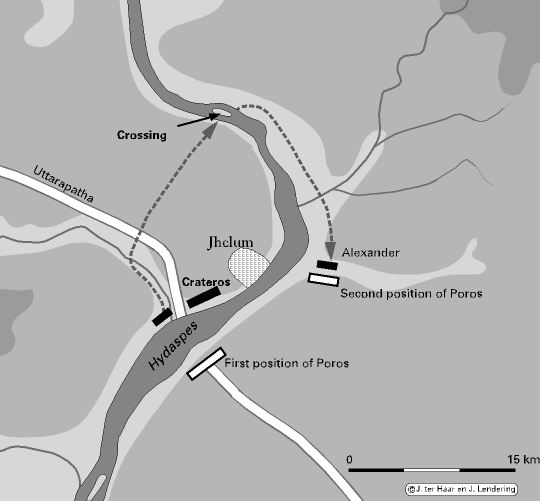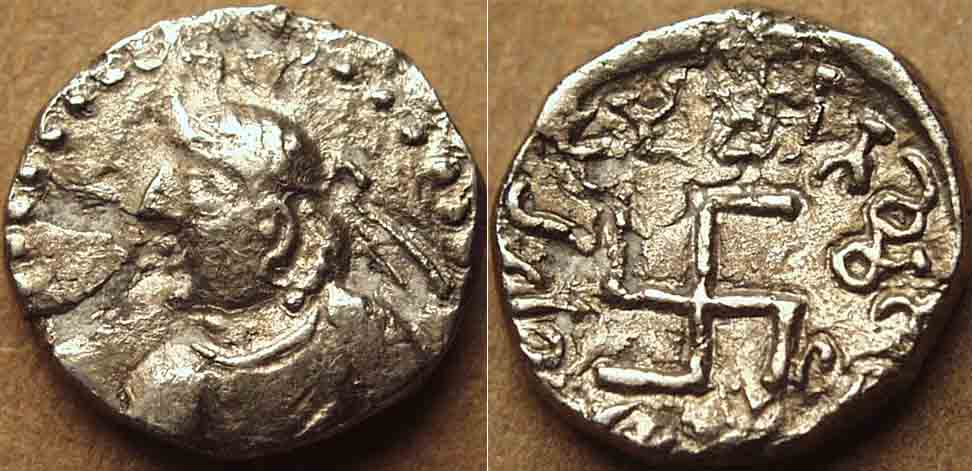A Culture Of Discrimination Or A Culture Of Emancipation? A Critical Look At Romila Thapar’s Latest Book
- Hindu literature bears witness to strong voices for social emancipation through spiritual oneness.Placing the blame squarely on Hinduism for social exclusion is simply part of the exercise to stereotype the religion by vested interests.
The chapter titled, 'The Culture of Discrimination' in Dr Romila Thapar’s latest book, Indian Cultures as Heritage: Contemporary Pasts (Aleph, 2018), is a strong proof of an ‘academic’ sleight of hand that Marxists exhibit for denigrating Indian culture. The entire book has no insights, new or even old, and it is only a recycling of the propaganda stereotypes generated by the colonial and the Marxist scholarship.
Her Claims
Let us look into the specific claims she makes depicting the so-called ‘Brahminical’ Hindu culture as 'the culture of discrimination' and see what quantum of corresponding factors she has to hide to make such a stereotyped depiction. From the beginning there is a conspiratorial air to her approach, which she says is the study of the “form of discrimination that differentiated Indian society from others, namely the carefully worked out theory of varna-ashrama-dharma that was thought necessary to the idea of the Savarna society, followed by the creation of the category that was to be kept outside the Avarna.”
Thapar says that the “notions of the ritual purity of the Brahmana go back to the Brahmana as the Vedic ritual specialist.” Then she makes the claim that though, “Vedic Brahmanism had been less prominent with the rise of Puranic Hinduism, ... there was a revival of Vedic rituals, legitimizing rulers in the multiple kingdoms that emerged in the post-Gupta period.”
According to Prof Thapar, with this revival the discriminatory “assertion of Vedic Brahmanism ... initially limited to a small elite, ... grew both in numbers and in claims to extraordinary status.”
What is that extraordinary status?
The exclusion of the Avarna took the form of arguing that some communities were Asprishya, a term that came into use at this time. This dates to the early to mid centuries of the first millennium AD.
She wants to “try and trace the evolution of what might have gone into the making of this idea"because she claims "social historians have not as yet focused on studying the Avarna in early Indian society”. So she suggests a methodology:
The ghettoized communities were not educated, so they have left no written records. They have to be studied by combing through the records of literate groups. If exclusion and discrimination is specifically explained and juxtaposed with whatever descriptions we have, then it might be possible to retrieve some idea of the functioning and values of this ghettoized Avarna society.
Now she gives a “possible reason”. What she actually makes are a few speculative questions which are more rhetorical than scholarly:
... could be that the requirement of legitimizing rulers in the multiple kingdoms that emerged in the post-Gupta period, may have revived to some extent, the ritual role of the Brahmana, required to perform rites of legitimation for the new royalty. Did this revival reinvigorate the theory of the maximum purity of the Brahmana, at least among the Brahmanas? Did this then require as a counterweight, the more extreme identity of the Asprishya?
While she continuously paints the Brahminical literature as discriminatory she is soft on Buddhist literature and, in fact, sets it as more egalitarian:
The Buddha had a far more humane and rational view and is reported to have said that one becomes a Chandala by one’s actions and by evil thoughts and not by birth. Buddhist narratives such as the Jataka however do reflect discrimination against Chandalas. There is also a linguistic barrier since mention is made of a Chandala-bhasha or language specific to the Chandalas and different from the generally spoken one.
Then she narrates in detail the encounter between a Chandala and Viswamitra to buttress her claim:
Manu speaks of their descent from a mixed marriage between a Shudra father and a Brahmana mother — the worst form of hypogamy. It reads as if it was also intended as a putting down of women, in keeping with much else in Manu. It was said that the Chandala receives leftover food, wears clothes taken off corpses, and can only have iron ornaments. Only in dire hunger should food be accepted from a Chandala. This is precisely the discussion in a late chapter of the Mahabharata, which had an angular relationship with the Dharmashastras. In this episode the Sage Vishvamitra has a discussion with a Chandala during a severe famine, on the kind of meat permitted to a Brahmana, and whether it is legitimate to eat what is forbidden simply to keep the body alive. Although the Chandala tries to dissuade the sage from breaking the taboo (which Vishvamitra is about to do to assuage his hunger) he does not succeed. It is interesting that the Chandala seems to know so much about the Brahmanadharma and one wonders if this is meant as a sarcastic comment.
Though she mentions Buddhist texts categorising even forest dwellers with the excluded communities, she does not elaborate on them much. Then she presents three features in the social exclusion phenomenon in India which she presents as the its salient features:
There were at least three pointed features of this definition of Otherness that differentiated the Asprishya from all the other categories of excluded groups. ... A second feature was the constant underlining of their being permanently impure and polluted, since they had to handle what was regarded as polluting objects as viewed from the Brahmanical perspective.... The third feature is that the pollution is permanent.
She claims that this social structure is peculiar to India.
To declare such people to be physically so impure that they could not be touched, and not only them individually, but their entire community and its descendants, is a belief and practice that inheres to Indian society alone.
Even “religions that maintained the equality of all in the eyes of God” had to compromise in India and accommodate discrimination and exclusion, she claims. Now she pretends to be objective and asks the question if there were factors other than religion that were involved in this concept of untouchability:
Islam and Christianity did not introduce it for West Asia and Europe. It has been asked whether it is rooted in religion or more so in socio-economic requirements, although it is sought to be legitimized by resort to religion.
Then she proceeds to answer in which the blame is put squarely on the so-called “Brahminical Hinduism" and opposing this she fabricates an other side with an assortment of elements. She presents this as the alternative voice from the supposedly marginalised or suppressed sections of ancient India:
The Brahmanical mode of Hinduism was the prime legitimizer of caste society and untouchability as is evident in the disjuncture between Savarna and Avarna society. As has been rightly said religion can be the resistance of the oppressed but it can equally be the oppression by the elite. It would seem that on the issue of untouchability social ethics were marginalized by religions in India. ... We should know more of the ideas of the Charvakas, Buddhists and Shramanic teachers, and some such as Chokhamela and Ravidas as well as some Sufi teachers on the society they lived in. The Charvakas are dismissed because they questioned religion and with the others their social concerns are rarely discussed except in a general way. The Dharmashastra literature is concerned with the well being of only a small part of society.
The Real Hinduism: A Culture Of Emancipation
Now let us look into each and every aspect of this essay and see how much of historical and cultural data are not intentionally taken into account to create the above stereotype.
‘No’ To Harappa And ‘Yes’ To ‘Anasa’
Scholars point out that even during the Harappan period there existed a social stratification. What Harappan schloar Iravatham Mahadevan proposes from the Harappan seal signs, is very similar to the Varnasystem. We simply do not know for sure but it is difficult to dismiss this similarity as coincidental. Mahadevan who holds that the Harappan civilisation is Dravidian in language but Vedic in culture, states that the signs show the different occupational communities like ‘priests’, ‘warrior class’, ‘servants’ etc. He connects a terminal sign (jar) in the Harappan script "to priestly ritual in Indian tradition." He also points out that Kunda as “both jar and the fire pit” and "there are communities which claim to have arisen from the jar, and other from the fire pit”. So he connects the later caste origin legends as having a connection here.
Curiously, Thapar does not even discuss this aspect, even though it is very much actually pertinent to the question of social exclusion. Curiouser, she chooses to rekindle a settled debate - the misinterpretation of Max Muller with respect to the term ‘Anasa’. She writes: “Some physical differences are mentioned but they are the subject of scholarly debate. Does ‘anas’ mean ‘without a nose’ i.e., snub-nosed, or does it mean ‘without a mouth,’ i.e., speaking another language.”
Speaking of ‘physical differences’ and then surreptitiously referring to ‘anasa’ question is an excellent example of how in almost every sentence the Marxist historian indulges in planting negative thoughts about Indian culture while pretending to be objective. Dr B R Ambedkar who had his own justifiable prejudices against Hinduism in his scholarly work, ‘Who were the Shudras’ clearly settles the debate as early as 1946 and since then many scholars have emphatically rejected the ‘physical’ association of the term made by Max Muller. Dr Ambedkar writes:
The term Anasa occurs in Rig Veda V.29.10. What does the word mean? There are two interpretations. ... Sayanacharyareads it as an-asa while Prof Max Muller reads it as a-nasa. As read by Prof. Max Muller, it means ‘without nose.’ Question is : which of the two readings is the correct one? There is no reason to hold that Sayana’s reading is wrong. On the other hand there is everything to suggest that it is right. In the first place, it does not make non-sense of the word. Secondly, as there is no other place where the Dasyusare described as noseless, there is no reason why the word should be read in such a manner as to give it an altogether new sense. It is only fair to read it as a synonym of Mridhravak. There is therefore no evidence in support of the conclusion that the Dasyus belonged to a different race
After five decades of Dr Ambedkar writing this, Prof Thomas Trautmann an anthropologist from the University of Michigan, wrote elaborately about how the entire misreading of Vedas happened.
This first effort to find direct evidence of the physical features of the Indian aborigines in the Sanskrit text dating from the time of the Big Bang that brought Indian civilization into existence boiled down to a matter of noses. Max Muller himself later abandoned his own interpretation of the word sipra, so that the evidence as to noses was reduced to a single words (anasa) in a single passage ... In the Vedic index the difference between the new interpretive frame of the Orientalists and those that preceded is ... (When) Sayana wishes to explain a reference ... he does so not by reference to racial difference between aborigines and invading Aryans but by assimilating it to the view of the past that is familiar to him, the world of Puranic mythology. ... For the Orientalists, by contrast, the first interpretive move is not to assimilate the words of a difficult archaic text to a familiar mythological world but rather to remove what can be constructed as fact from the realm of mythology, to rescue history from myth; indeed the ‘facts’ are constructed by that act, as at the same time the mythological residue is drained of factuality. The Vedictext does not always cooperate, because Dasa and Dasyus are often described in superhuman form; whence discussion of the question must at the outset address the question of which passages if any may be taken to refer to human beings and to constitute ethnological facts.Thomas R Trautmann, Aryans And British India, University Of California Press, 1997
Quoting of this rather long passage of caution by Prof Trautmann, becomes necessary because Prof Thapar also indulges in the same fallacy in her essay, “discussing the opposed duality of the more frequently mentioned aspects of the exclusion, such as the Arya-Dasa varnas, the Arya-Mlecchas differences”.
The compulsive obsession to somehow relate the social exclusion with the literary Arya-Dasa binary and suggest on the sly that the obvious misinterpretation about a supposed physical feature as unsettled, needs to be contrasted with her silence on the possible continual evolution of social stratification from the Harappan period. The obsession and the silence have an ideological vested interest - the singular motive of stereotyping Hinduism. It is this ideological vested interest that has made the social science institutions in India prisoners to a ‘hate-India’ ideology.
Four-Fold Varna System: Divine Sanction?
Romila Thapar also speaks how divine sanction was given by 'Brahminical literature’ to four-fold Varna system. She states:
The attribution of divine creation to these categories gave the highest sanction to a scheme that was put together by a society of humans. Interestingly, the four varnas emerge from the human body. Essentially a Brahminical theory, it is formulated as the varna-ashrama-dharma in the Dharmautras and Dharmashastras. It is reiterated in the Bhagavad Gita, but here it is stated Krishna claims to have created the four varnas. The origin of the theory therefore varies but is of divine origin.
Romila Thapar herself mentions in the passing that the famous Purusha Sukta hymn in Rig Veda which presents an organic view of the four-fold society does not have the term Varna. Yet she calls the human-orgasmic view of society as 'Brahminical'. Panditar Iyothidasar (1845-1914), a virulently anti-Brahmin Buddhist scholar from Madras province, interpreted the Purusha Sukta as more Buddhist than Brahminical. He gives an interpretation to this view by simply replacing the Purusha or Brahman with Buddha. But he retains the scheme including the Shudrascoming from the feet of Buddha. A believer in Aryan invasion theory, Panditar explains that this original Buddhist system of four-fold organic varna was corrupted by Aryans. But the point to be noted is that he did not see the varnas as parts of a divine body itself as 'Brahminical'.
On the other hand, Prof Arvind Sharma points out how the creation of varnas in Brihadaranyaka Upanishad (Br.Up) provides some important insights. Prof Sharma points out that the account in the Upanishad “almost contemporaneous although not quite" whose antiquity "virtually matches that of the Rig Veda account is historically a significant fact in itself" though he thinks it “may not have been as influential as the one found in Rig Veda”. However, as we will, this account has more relevance to the question of what social values Indic spirituality sanctions.
The Br.Up explains the process in the verses from I.4. from 11 to 15. Here initially there were only Brahmins and desiring more completion creates the Kshatriyas and then again being not completed the Vaishyas and still not being fully completed the Shudras are created. Then crucially: “He was not yet developed. He created still further better form - Dharma. ... Therefore there is nothing higher than the Dharma. So a weak man controls a strong man by Dharma, just as if by a king.” The account ends saying that “therefore people desire a place among Gods in Agni and among men in Brahman, for by these two forms (per-eminently) Brahma appeared." The account makes it clear that through dharma the power structures are not fortified but rather challenged, that a common man without any power should be able to challenge and yet stand protected by dharma “like a king".
The Upanishadic account would have a clear impact on further view of varna system in both Mahabharata and later Smritis. Prof Sharma explains:
All the varnas ultimately emerge from and can be traced back to the first - the Brahmana. Whereas in the Purushasukta all the four Varnas emerged from the same Purusha, here the four Varnas are created in succession and why are they created? Because ‘he was not yet developed’ or ‘did not flourish’. No reason is assigned for the creation of the four varnas in Purushasukta but in this Upanishadicaccount a reason is given; what was a natural phenomenon in the Rig Veda has become a rational phenomenon in the Brihadaranyaka Upanishad. ... This implies that if the system fails to deliver the goods then it can be abandoned for Manu (IV.176) states clearly that.‘Brihadaranyaka Upanishad And Modernity’, 1997
Bhagavad Gita And The Psychology Of Social Exclusion
So when Sri Krishna speaks of him creating the four-fold varna system one needs to see what approach he is actually taking. Already in Mahabharata the Upanishadic view is further developed into an evolutionary view. So in Mahabharata itself we find:
There is no differences of castes: this world, having been at first created by Brahman entirely of Brahmins became afterwards separated into castes in consequence of works. ... Being separated from each other by these works, the Brahmins became divided into different castes. Duty and rites of sacrifice have not always been forbidden to any of them.(Trans.Muir:quoted By Prof. Sharma)
So in Bhagavad Gita when Sri Krishna speaks of the four varna creation it is more likely that he adheres to this Upanishadic approach. Perhaps, that may be the reason why the Viswarupa does not incorporate in it the Purusha-Sukta form of the society. The shift from community or clan to swabhava and swadharma (individual nature and individual dharma) as well as the emphasis on 'Guna-Karma' rather than 'Kula-Janma' are further indicators. So contrary to the claim of Prof Thapar, Bhagavad Gita and 'Brahminical literature' make the system more accountable, flexible and allows it to be subjected to questioning than provide a stamp of divine sanction.
But there are verses even more crucial and relevant to the phenomenon of social exclusion in Bhagavat Gita.
One of the important aspects of social exclusion is the fear for the body based ritual pollution. The basis of which is the hatred or aversion towards the body of the other person. The aversion towards the physical bodies of others comes from a deep-seated aversion to their own bodies. Whatever the reasons given in terms of ritualism, ultimately at the basis is the psychology of power and hatred. Bhagavad Gita seems to have anticipated this diagnosis and cautions towards this aversion.
In the discussion of demonic and divine qualities (chapter-16) Krishna speaks of those who consider themselves high-born as demonic (verse-15). Then verse 18 makes an important statement: that because of their egoism, power, pride, lust, vengeful nature, such demonic peopele hate the divine in the bodies of others and in their own bodies.
So one who considers oneself higher, for the reasons of (local history based) vengefulness, (political socio-economic) power, lust (for resources etc.), (clan or self) pride etc. develops the notion of body based hatred for others but in the process hates the divine in oneself and the others. Perhaps, a better diagnosis of the way social exclusion behaves in India could not have been given. As we will see in the encounters with Chandalas, one can see that this principle becomes important wherever Krishna plays a role. Again mining only for negative stereotyping 'Brahminical Hinduism', Romila Thapar never bothers about these aspects.
Vedic Values: For Social Stagnation Or Social Emancipation?
In the Vedic society, there definitely were forces which supported and nurtured social stratification and stagnation. At the same time, inside the Vedic literature we find strong voices for social emancipation through spiritual oneness. However, Romila Thapar chooses to ignore or at best reduce to a bare minimum the importance of such voices. She mentions about an “exceptional category called the Dasiputra Brahmanas, almost an oxymoron” and in the context narrated briefly the episode of Kavasha thus:
A much-respected Brahmana Kavasha Ailusha, the son of the Dasi, Ilusha, is said to be a purohita. They tend to take their mother’s name which was perhaps an assertion of their Dasa identity. Kavasha tried to join the sacrificial ritual but the Brahmanas drove him away to the desert because of his Dasi birth. There he recited a hymn to the waters and the Sarasvati River came and enveloped him. So the Brahmanas conceded that he was known to the gods, took him back and acknowledged that he was the best among them. Equally revered was Kakshivant Aushija, the son of the Dasi Ushija.
She also mentions Jabala. But what she does not discuss is what the Vedic religion shows through the episode. Note that all she sees in this episode is an ethnic angle by stating that the rishis tending "to take their mother’s name which was perhaps an assertion of their Dasa identity”. Does not the episode contain in it a statement against social exclusion and birth based discrimination? The episode is described in Aitreya Brahmana. The assembled ritualists hurl epithets at Kavasha Ailusha as “dasyah putrah kitavo abrahmanah” (son of a servant maid, gambler and a non-Brahmin).
This shows a general stereotype, which persists in most people that those who come from the marginalised sections of the society are people of low moral and ethical values and that they are hence cannot be considered sacred. Thrown out into the desert by the ritualists who insist on social exclusion, the seer Kavasha becomes a Vedic visionary and bursts forth with the hymns the Aponaptriya ('Child of the Waters') hymns of the Rig Veda (RV 10:30). (In another similar situation narrated in Pancavimsa-Brahmana, Vatsa who was called Shudra-putra and a non-Brahmin, also proved himself to be Vedic seer and mantra-drishta.) Strangely, in an earlier essay in the same book. Prof Thapar comes to a strange conclusion from the very same episodes that “what mattered was the caste of the father therefore the mother could well be a Dasi”.
Note how from being called a Dasi putra the rishi takes the discourse to him being the child of waters - the emphasis on common humanity. Note that nowhere there is any mention of the caste of his father. The emphasis is on birth-based exclusion of a seer by ritualists getting condemned and the humiliated seer getting divinely honoured. We will see this as a pattern throughout Hindu literature: a person of so-called low origin being ill-treated by the orthodoxy or the ritualists and then the divine siding with the humiliated and punishing the ritualists. While social stagnation is a natural degeneration that happens in any society all the time the social emancipation is provided by the spiritual voices in Hindu discourse and it has a Vedic origin.
Emphasising this aspect would have made the negative stereotyping of the ‘Brahminical Hinduism’ very difficult. Hence Prof Thapar not only minimises the importance of these events but also tries to shift the emphasis.
Encounters With The Chandalas:
Dr Romila Thapar takes a great interest in the conversation between Viswamitra and a Chandala , which is narrated as an anecdote by Bhishma in Mahabharata. Here the Chandala tries to stop Viswamitra from eating dog meat but Viswamitra is insistent. The context is stated as a 12-year long famine. A similar incident of a Chandala helping Viswamitra and his family tide over a famine set in a richer socio-political context in Harivamsa as well as puranas like Vishnu Purana . This provides even a better understanding of social exclusion and where dharma stands. Again Prof Thapar mysteriously avoids such a discussion.
Let us, however, take a look at the way literary episodes of encounters with Chandalas are constructed in 'Brahminical' Hindu texts and see for ourselves what values and attitudes they suggest.
Chandala and Viswamitra
The Chandala was none other than ‘Satyavrata’ who received the name of Trisanku and was degraded to the state of a Chandala or outcast because of his conflict with the Vasishta clan. The father of Satyavrata exiles the prince because he had abducted someone’s wife. The prince argued that as the seven steps ritual was not complete for the girl, he technically did not abduct a married woman but on the advice of Vasishta, he was exiled to the community of ‘dog eaters’. In many narratives, he became a Chandala. The exile of the prince was followed by a famine for 12 years. The Chandala used to suspend flesh upon a fig-tree on the banks of the Ganges for the wife and children of Viswamitra. “He did not give it with his own hands for he might not accept the present of a Chandala”, the Vishnu Purana informs us. During the course of this time he also killed a cow which belonged to Vasishta and he ate it and also fed it to the family of Viswamitra. Because of this he was cursed again by Vasishta and hence called Trishanku (a man who committed three sins). However, when Viswamitra found that Trishanku helped his family tide over famine, he was happy. So in turn he reinstated Trishanku with the needed rituals.
He also made him enter the celestial world with the mortal body. Again his son would be Harishchandra. Incidentally, he would also do the work of a crematorium keeper - a work today associated with scheduled communities. Both the Chandala and the crematorium keeper were forefathers of Rama.
Chandala and Uttanka
Interestingly, an inverse of Viswamitra episode is also given in Mahabharata. Uttanka a Brahmin sage obtains a boon from Krishna that he should get water whenever he became thirsty. Once in a deserted, feeling thirsty, he wanted water and there appeared at once a Chandalawith his dogs and offered the water he carried. The Brahmin seer of course rejected the water with contempt. Then the Chandala disappeared. Krishna explained that Indra was ready to give Uttanka the nectar of immortality provided the seer could rise above the social discrimination and see the universal oneness.
Chandala and Rantideva
The story of Rantideva is told in Bhagavatam and is very famous throughout India. The king Rantideva having sacrificed everything when about to eat his meal was interrupted by a steady stream of people seeking alms. It started with a Brahmin and ended with a Chandala who asked for even the leftovers. The erstwhile king happily gave away what was left to the Chandala, he himself going hungry. Even as he tried to quench his thirst, the Chandala again asked for that water too. And the king happily offered that water to the Chandala. And this won him the ultimate liberation.
Chandala and Adi Sankaracharya
In this celebrated account the 7th century acharya of Advaita, who is highly revered throughout India, through all centuries since, the greatest attack ever was made on social exclusion. In a dramatic setting, the Chandalaand the monk, both outside the varna system, meet.
As the celebrated monk asks the Chandala to move away, the latter sharply exposes the hollowness of the concept of purity and pollution in the light of Advaita. If it is the body that pollutes then both the bodies are made of same physical elements and it is nonsensical to ask one physical body to move from the other. If one is talking about the atman as Advaitaholds all as one, how can one atman move from the other? Shankara bursts into a poem saluting the wisdom and says that anyone who possesses this wisdom whether he is considered a twice born or Chandalaby the society, Sankara accepts him as his Guru. To this day Maneesha Panchakam is a celebrated Advaitic text and artists love to depict the scene of Sankara touching the feet of the Chandala.
Had Dr Thapar taken all these narrations of Chandala encounters in the so-called ‘Brahminical’ Hindu texts and seen them together she would have found that the Hindu religion has always raised a spiritual voice against the social stagnation.
What About The Buddhist And Jain Sources?
In her shallow construction of ‘Brahminical’ Hinduism as the definite formulator of social exclusion, naturally the Indic so-called non-Vedic systems like Buddhism and Jainism through Shramanic traditions are deemed the alternative. To achieve this again she does a lot of hiding of facts. Note her words in the passage below:
The Buddha had a far more humane and rational view and is reported to have said that one becomes a Chandala by one’s actions and by evil thoughts and not by birth. Buddhist narratives such as the Jataka however do reflect discrimination against Chandalas. ... By the mid-first millennium AD the exclusion of the Chandala and others that formed the lowest jatis was well established. Buddhist texts state that other communities generally listed as excluded tended to be Adivasis — such as Nishadas, Pukkasas, or in low occupations such as Venas and Rathakaras.
Note the wordings. Note the sentence formation. Buddha himself is ‘far more humane and rational’ and Buddhist text merely ‘reflect’ social conditions. They only ‘state’ that communities listed as excluded tended to be Adivasis. So they are absolved of any role in the creation of untouchability. However, an examination of Buddhist texts tell a different story. Lalitavistara a layered Buddhist text from second century BCE to 4th century CE has this to say about the choice of caste for the birth of Bodhisattva:
Bodhisattvas are not born in a low family, such as that of a Chandala or of a basket-maker, or of a chariot-maker, or of a Pukkasa (one born of a Nishadha by a Sudra female). It follows that they are born in one of two families, either in that of a Brahmana or that of a Kshatriya.
While Romila Thapar quotes Fa Hian's account of Chandalas she shifts the focus to the Gupta rule and suggests that the Gupta rule and the alleged resurgence of the so-called 'Brahimical' religion during that time was responsible for untouchability:
...when Faxian visits in the fourth century AD, he describes how untouchables have to strike a clapper on entering the town, to indicate their presence so that the others can move away. This is in the so-called ‘golden age’ of the Guptas that the presence of the untouchable is heavily marked and emphatically defined.
But the problem here is that Faxian (Fa-Hian) writes he observed this phenomenon in Mathura, which was then according to him dominantly Buddhist (a city with 20 monasteries, having in all of them around 3,000 monks and the city also contained six stupas or holy relic structures). Romila Thapar intentionally omits the most important clue that Faxian/Fa-Hian provides: “Only the Chandalas are fishermen and hunters, and sell flesh meat.” This approving statement by a Buddhist monk associating Chandalas with trades considered defiled by the Buddhist religion shows the definitive influence of Buddhist theology in the proliferation of untouchability. After all, even during the Gupta period not all Gupta kings were ‘Brahminical’. Most were eclectic and there were important kings like Kumara Gupta who had strong Buddhist affinity. Further, the grouping that Faxian uses is very similar to the grouping used in many Buddhist texts to describe those with bad karmic descent. For example, Aṣṭasāhasrikā Prajñāpāramitā Sūtra of first century BCE which was translated into Chinese as early as second century CE, has this to say about the birth of Bodhisattva:
A Bodhisattva who trains thus is not reborn in the hells, nor among animals, nor in the realms of the Pretas nor among the Asuras, nor in outlying districts (among barbarous populations), nor in the families of outcasts or fowlers, of hunters, fishermen or butchers, nor in other low-classes families of that kind, in which one is addicted to low deeds.
The occupational groups involved in meat get defined defiled not just by their deeds but also by their birth-caste (Hinajatikesku, Hina- karmeshu) in these sutras. This is not limited to Buddhist texts. Jain texts also speak of the same:
According to Jain text, the Candalas are of three types, the Jati Jungita, Karma Jungita and Sarira Jungita. The hunters, painters, fishermen, tailors and acrobats are Jati Jungitas, by birth; those who rear birds and animals, acrobats and the barters are Karma Jungitas, by conduct; the dumb, the crippled, the hunch-back, the dwarfs and the one- eyed are Sarira Jungitas,Social Heritage Of The Tamils: Proceedings Of The National Seminar On The Social Heritage Of The Tamils, 1991, P.31
So in the so-called ‘Brahminical’ texts as well as in the Buddhist and Jain texts one can see the different factors which contributed to the proliferation and institutionalisation of social exclusion. The moralistic rigidity and emphasis on non-violence by the Buddhist and Jain religions provided a substantial contribution to the concept of defiled trades and as trades were often carried out in pre-modern societies through hereditary communities it led to birth based social-exclusion.
Counter to the present propaganda it was the revival of the so-called Brahminical Hinduism which led to the emancipation of many such occupational communities to escape the tyranny of untouchability imposed on them by theologies of Buddhism and Jainism.
Vedic Revival Combats Untouchability
As with Buddhism and Jainism, certain trades and hence communities became defiled, the revival movement of Vedic religious streams namely Saivism and Vaishnavism emphasised strongly the sacred nature of all trades and divinity present in all communities. It should be noted that this revival emerged in concrete conceptual and devotional form from the South. Both Sankara who emphasised the oneness of all existence and then Sri Ramanuja who propagated Vedantic humanism came from South India. Similarly, both Azhwars and Nayanmars had composed hymns which strongly negated the Buddhist-Jain condemnation of many occupations and communities as defiled.
The Panars or the bards who had a good social standing before the ascent of Buddhism and Jainism had become defiled professions and were considered untouchables during the seventh century in South India. In both Saivaite and Vaishnavaite revival, we see Thiru Neelakanda Yaazpannar and Thirupaan Azhwar getting venerated and their idols installed inside the temple. Thiru Gnana Samabandar, one of the principal most Nayanmar had Thiru Neelakanda Yaazhpaanar and his wife sleep in the house of a Brahmin where the Brahmin kept his household sacrificial fire. Thiru Gnana Sambandar is also credited with reviving a fishing town in the eastern coast of Tamil Nadu, which was previously deserted presumably because of the anti-fishermen non-violent stand of the Jain-Buddhist influence. This is corroborated by the ‘Amba song’ or the community song sung by the fisher folk of the area during fishing where they hail the victory of Sambandar over Jains.
The story of Dharmavyadha the butcher giving wisdom to the Brahmin ascetic, placed inside the Mahabharata text, may be a direct conceptual attack on the idea of social exclusion imposed on occupational communities like the butchers.
Sri Vaishanvism proclaimed that anyone insulting a fellow Vaishnavaite would be at the very instance excommunicated. Then it defined the term 'insulting' as 'mere inquiry of the Jaathi of a fellow Vaishanavite'.
Thirumazhisai Azhwar came up from the community of basket-makers, one of the communities which was marked defiled in Buddhist literature. This Azhwar considered to be the manifestation of the divine discus of Vishnu (called Sudarshan or good vision) was asked by a group of Brahmins to accept the first respect in a vedic sacrifice. A dominant group of ritualists opposed this citing the lowly caste from which Azhwar came. In traditional Vaishnava retelling, the ritualist opposition is equated to the objection Sisubala raised against honouring Sri Krishna. And Azhwar demanded the divine to intervene through the following verse:
What use this obsession with the rights of first honour?
Can’t You unveil this mischief and show the innate Divinity
You whose hand holds the divine discus
Manifest out the Divine that resides within
So the ritualists shall be humbled.
Can’t You unveil this mischief and show the innate Divinity
You whose hand holds the divine discus
Manifest out the Divine that resides within
So the ritualists shall be humbled.
The social implication of such narratives cannot be missed. These were no fringe phenomenon as Romila Thapar would like us to believe. She states that the notion “to ascribe genetic impurity to a set of communities' was 'so widely accepted, questioned by only a handful of Bhakti sants and a few others?’’ But in reality we see that the concept of social exclusion was repeatedly questioned during the so-called revival of ‘Brahminical Hinduism’. Most probably more communities were liberated from the stigma of impurity imposed on them by religious notions which emphasised life negating moral values and excessive non-violence. Sri Ramanuja questioned the notion of pollution and defilement directly through action when he went to take bath supported by a Brahmin and returned from bath supported by a non-Brahmin.
Similarly, though Buddhism and Jainism catalysed untouchability, in an inadvertent way, we also find in them the voices of social emancipation. Thus to elevate Chandalas a Bodhisattva may be born as a Chandala too informs a Buddhist text on Bodhisattva-bhumi.
The sixteenth century work Thiruvilayadal Puranam by Paranjothi Munivar (in Sanskrit Halasya Mahatmyam) has an interestingly advanced critique of negative stereotyped views of communities. A Brahmin and his wife pass through a forest. As the wife becomes thirsty the Brahmin leaves her under a tree to fetch water. When he returns he sees her dead with an arrow piercing her heart. He also finds a tribal with bow and arrow nearby. He accuses the tribal and takes him to the court of Madurai. Based on circumstantial evidence the king was about to execute the tribal when it is revealed to the king that the wife got killed not by the tribal but by an old arrow that was struck already in one of the leaves of the banyan tree which fell on her when the wind rocked the branches. The incident is a nuanced cultural check against stereotyping of forest dwellers as wanton killers or criminals.
The autonomy that forest dwelling communities enjoyed before the advent of colonial rule, needs to be seen along with such sustained positive projection of tribal communities in traditional Hindu literature.
Important in this context is the very popular account of Kannapa - the tribal devotee. The tribal placing his foot on the Sivalinga offering his own eyes is depicted in all Siva temples emphasising that true spirituality transcends ritual purism. Such depictions of tribal communities account for the relative high degree of freedom and autonomy these communities enjoyed before colonialism alienated, impoverished and criminalised these communities.
Is Untouchability Peculiar To India And ‘Brahminical’ Hinduism?
“Yes”, says Romila Thapar emphatically:
Virtually every society of the ancient world practised temporary periods of impurity especially in the context of performing rituals. ... But to commit people to a permanent state of pollution and impurity is unique to India and calls for far greater investigation than has been done so far.
Placing the blame squarely on Hinduism, she also says that “Islam and Christianity did not introduce it for West Asia and Europe.” Really? A look into the social history of Europe and Arabian communities reveal something different.
Historian Kathy Stuart, who studies social stratification in pre-modern Europe, says that throughout the so-called Holy Roman Empire, “people belonging to the dishonorable trades suffered various forms of social, economic, legal and political discrimination on a graduated scale of dishonor at the hands of "honorable" guild artisans and in "honorable" society at large.” The dishonourable professions were that of executioners and skinners. People who carried out such jobs “might be pelted with stones by onlookers, they might be refused access to taverns, excluded from public baths, or denied honorable burial.” Stuart also states that the “dishonor was transmitted through heredity, often over several generations...” (Defiled Trades and Social Outcasts: Honor and Ritual Pollution in Early Modern Germany, Cambridge University Press, 2006)
In fact, the European hereditary social stratification was a seven-fold pyramid justified by theology. Those at the bottom were hereditary communities of manual labourers. So as late as the 19th century we have under the entry ‘Labour’ in ‘A Cyclopedia of Biblical Literature (1840)‘ that in Christian lands till that century when colonialism reached a height, “the hereditary hewers of wood and drawers of water” were considered “doomed by Providence, if not primarily by the Creator himself, to a low and degrading yoke, and utterly incapable of entertaining lofty sentiments or rising to a higher position; to be restrained therefore in every manifestation of impatience, lest they should temporarily gain the upper-hand and lay waste the fair fields of civilization; and to be kept under for the safety of the society, if not for their own safety, by social burdens and depressing influences of disregard and contempt.” It should be noted that St Augustine had already made hereditary subservience related to sin which in Christian theology was inherited.
In Islam too there is the Ashraf-Ajlab divisions which were hereditary. Despite the propaganda of equality even in the 20th centur,y 'marriages between sayyid women and non-sayyid men were publicly denounced'. When in 1905 a reformist Egyptian Islamic scholar sanctioned such a marriage, a leading Islamic scholar Sayyid Umar al Attas declared that a marriage between a sayyida and a non-sayyid was unlawful, because descent was to be the basic criterion for kafaa'. And directly contrary to the claim of Romila Thapar, we have a clear social stratification with hereditary social exclusion in the West Asian Arabic country of Yemen. Here is a description:
These are “people of the suq” (market) i.e., townspeople who engage in a number of disvalued occupations which have different names in different parts of Yemen. Regardless of name, their low positions in the local hierarchies remain failrly {sic} constant. The important thing in Yemeni eyes is that they have no honourable descent.... Occupations included in this category are the butchers (Jazzara); the barbers (Muzayyen) who perform such roles as circumcision, the potters, weavers; bath attendants (Hammami), Gisham, (vegetable growers and peddlers), Khadem, (servants) and the semi-nomadic public criers (Dawshan). The inferior groups generally can marry among themselves, but not outside this low-status group of occupations. They lack the pedigree and values of tribesman and historically their functions have been to provide services for the Sayyids, Qadis and Qabilis.J G Kennedy, ‘The Flower Of Paradise’, Springer Science, 2012
Such discrimination and notion of purity have definite Islamic roots though, today, reformist scholars as well as Islamist propagandists may argue that Islam at its core does not allow such discrimination. After all, Sayyids were considered as related to the Prophet of Islam through bloodline. And to this day, it is not uncommon for Islamic rulers to spend much research and resources to prove that they are Sayyids.
Indic Culture Of Emancipation
In all societies there exist forces of social stagnation and social emancipation. Religion is used by both the forces to support their side. There are socio-political and economic factors which influence the ascendancy of either of these forces. For a biased scholar, it is easy to take those elements of religion which side with social stagnation and then essentialise that religion or culture as essentially socially stagnant while praising or using another yardstick to measure the cultures towards which one is biased. Throughout the last two centuries, colonialists and evangelists have been doing this attribution fallacy attack on Hindu culture and religion. Marxism being essentially colonial in its aversion towards the Indic, a Marxist scholar like Romila Thapar also indulges in the same.
But in reality, the uniqueness of Hindu culture and religion is that it has sustained spiritual voices coming from it against social stagnation and for social emancipation. From Vedic seer Kavasa and Jabala Satyakama to Swami Vivekananda, Gandhi and Savarkar through Aazhwars, Nayanmars and Sri Ramanuja this is a civilsational uniqueness of Indic culture. Dr Ambekdar, despite his warranted anger against socially stagnant aspects of Hinduism, historically comes in the Ramanuja-Ramananda-Kabir tradition. Both Islam and Christianity, on the other hand, removed their social discrimination only with inflow of money through colonialism, expansionism or the wealth of their natural resources.
For example, here is one rare report about one of the untouchable communities in Europe that has surfaced.
For hundreds of years, Cagots were treated as different and inferior. In the churches, they had to use their own doors (at least 60 Pyrenean churches still boast “Cagot” entrances); they had their own fonts; and they were given communion on the end of long wooden spoons. Marie-Pierre adds: “When a Cagot came into a town, they had to report their presence by shaking a rattle. Just like a leper, ringing his bell.”Sean Thomas, ‘The Last Untouchable In Europe’, ‘Independent’, 27-July-2008
There should have been other communities as there were hereditary defiled trades. But clearly the colonialism and slave trade and then indentured labour from colonies along with expansion of the West into Africa, Australia and Americas made the disappearance of the evil of social exclusion possible. That very rarely these communities are discussed in European literature or history and that today mostly these communities have disappeared without any struggle is not actually a positive sign of European society. That a Voltaire or a Marx never even cared to write about their sufferings but rather accepted it as factor of life and talked about revolutions etc. is a commentary on the Western culture. It is interesting that Christianity never produced any critique of their social exclusion as a Kavasa or a Thirumazhisai Azhwar did. It would be unimaginable to think of a mediaeval Christian literature make a Catholic monk learn real religion from a socially disadvantaged group like butchers.
So contrary to what Romila Thapar claims Hindu culture is not a culture of discrimination but a sustained culture of emancipation. Aravindan is a contributing editor at Swarajya















 Cylinder seal described as Akkadian circa 2334-2154 BC, cf. figure 428, p. 30. "The Surena Collection of
Cylinder seal described as Akkadian circa 2334-2154 BC, cf. figure 428, p. 30. "The Surena Collection of  Cylinder seal of Shu-ilishu, interpreter for Meluhha. Cuneiform inscription in Old Akkadian. Serpentine. Mesopotamia ca 2220-2159 BCE H. 2.9 cm, Dia 1.8 cm Musee du Louvre, Departement des Antiquites, Orientales, Paris AO 22310
Cylinder seal of Shu-ilishu, interpreter for Meluhha. Cuneiform inscription in Old Akkadian. Serpentine. Mesopotamia ca 2220-2159 BCE H. 2.9 cm, Dia 1.8 cm Musee du Louvre, Departement des Antiquites, Orientales, Paris AO 22310 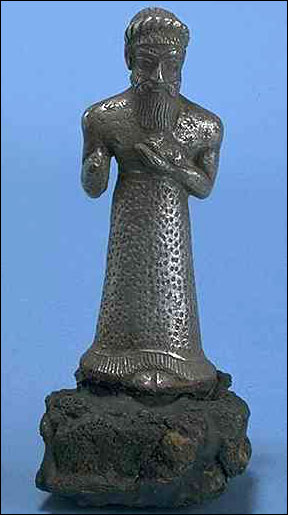 12th cent. BCE.
12th cent. BCE. 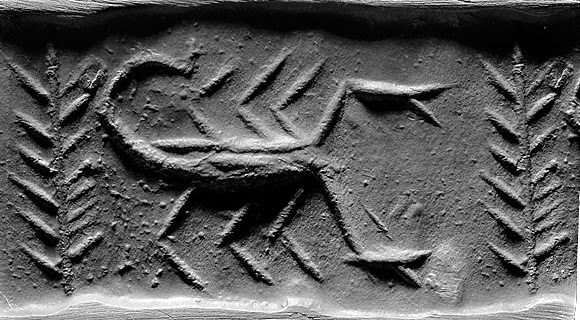












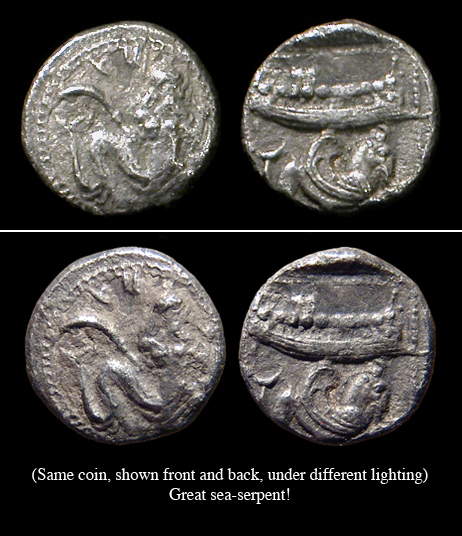


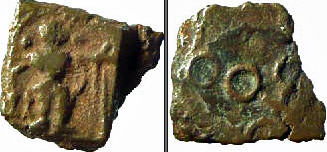

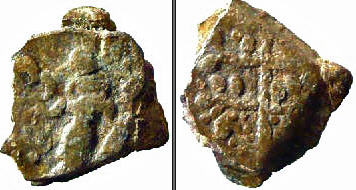


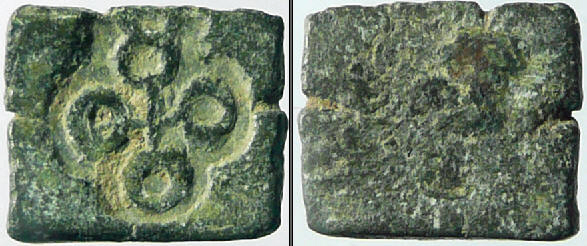
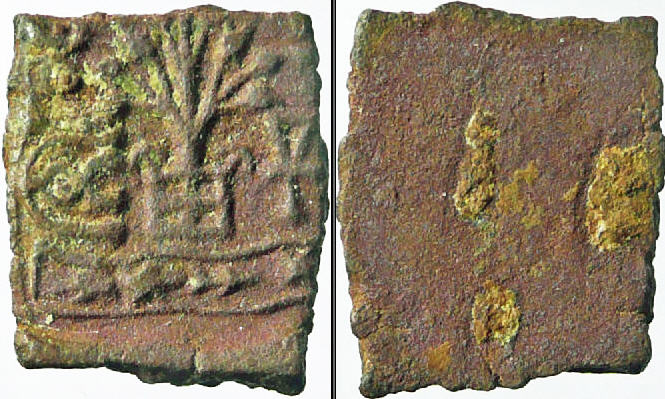




























 We are Brahmins. Etymologically Brahmin means a person who has the full knowledge of Brahman, that is God. A Brahmin is supposed to be a repository of spiritual knowledge. He is not only a repository but also a nucleus from where the knowledge should radiate in all directions.
We are Brahmins. Etymologically Brahmin means a person who has the full knowledge of Brahman, that is God. A Brahmin is supposed to be a repository of spiritual knowledge. He is not only a repository but also a nucleus from where the knowledge should radiate in all directions. 
 In the course of time the ten families multiplied and with the passage of time they took to trade and commerce as permitted by the scriptures, besides officiating as priests. Depending upon their occupations this gave them various surnames as they have to-day like Kini - a treasurer handling money with the jingling sound, Mallya - a construction contractor who built mansions or mahals, Nayak-a leader in any army. In Goa they were in full bloom and they built up hundreds of shrines and temples besides establishing Shri Kaivalya Math in the eighth century.
In the course of time the ten families multiplied and with the passage of time they took to trade and commerce as permitted by the scriptures, besides officiating as priests. Depending upon their occupations this gave them various surnames as they have to-day like Kini - a treasurer handling money with the jingling sound, Mallya - a construction contractor who built mansions or mahals, Nayak-a leader in any army. In Goa they were in full bloom and they built up hundreds of shrines and temples besides establishing Shri Kaivalya Math in the eighth century.



 efforts were made by the great visionary, the Late Shri Ammembal Subba Rao Pai, a leading lawyer of Mangalore (1852-1909) by founding Canara group of schools and also the now famous Canara Bank. He is still regarded as the pathfinder for the GSBs. Persons like
efforts were made by the great visionary, the Late Shri Ammembal Subba Rao Pai, a leading lawyer of Mangalore (1852-1909) by founding Canara group of schools and also the now famous Canara Bank. He is still regarded as the pathfinder for the GSBs. Persons like 




 Ganweriwala ablet
Ganweriwala ablet






 Sanskrit pandits train in reciting Sanskrit texts from childhood, for seven years.
Sanskrit pandits train in reciting Sanskrit texts from childhood, for seven years. Regions in the pandits’ brains were dramatically larger than those of controls.
Regions in the pandits’ brains were dramatically larger than those of controls.














 He also carries a rattle or a bone (broken tusk? to signify his role as a scribe.)
He also carries a rattle or a bone (broken tusk? to signify his role as a scribe.) Another metaphor of armour is the falcon.
Another metaphor of armour is the falcon. 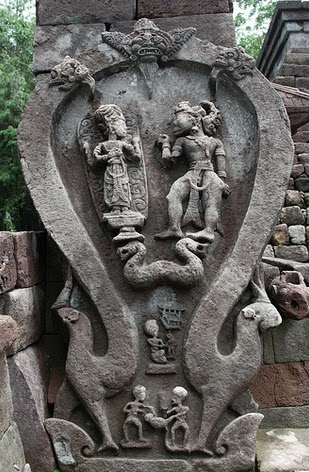






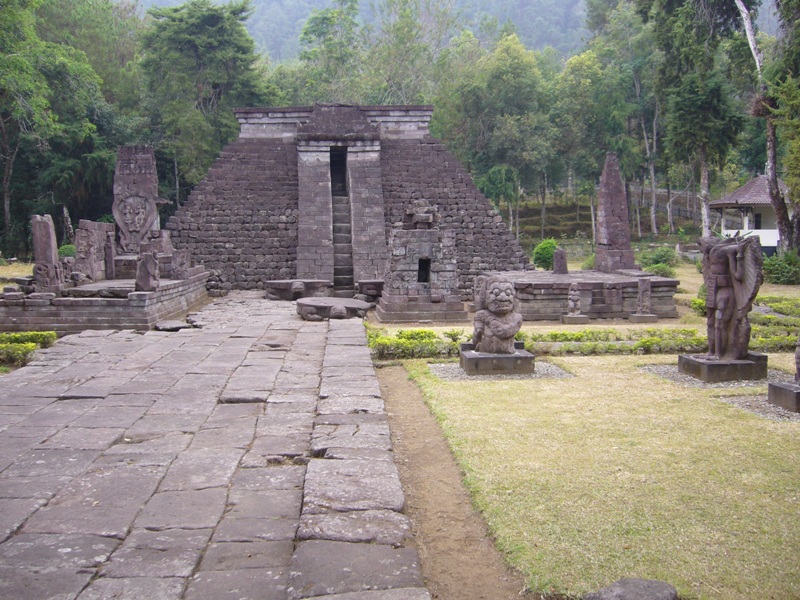

































 I suggest that the equivalence of Greek Pi in Samsk
I suggest that the equivalence of Greek Pi in Samsk

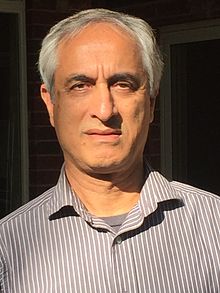

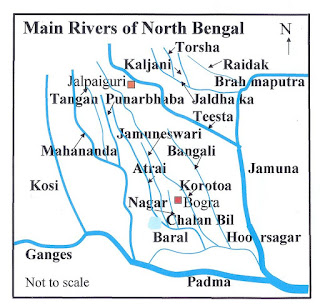

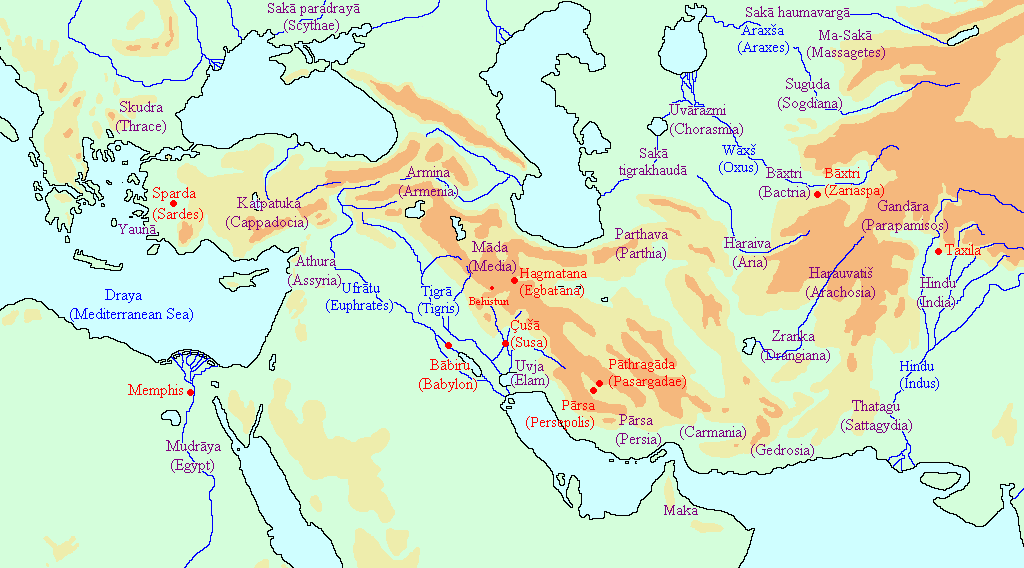
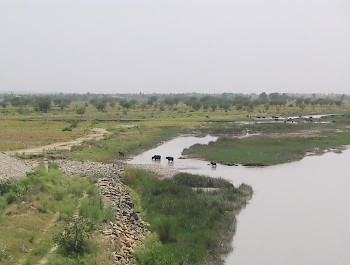 Possible location of the batttlefield,
Possible location of the batttlefield, 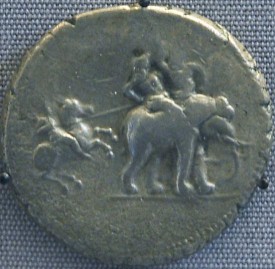 Macedonian cavalry --
Macedonian cavalry --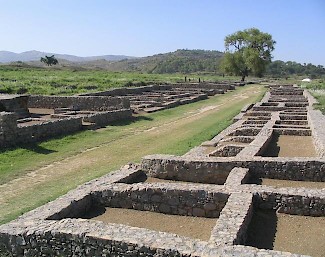 Sirkap.
Sirkap. 



